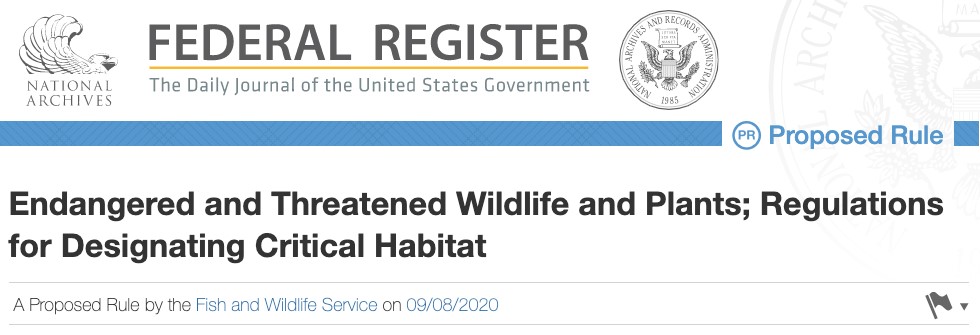Week in Regulation
September 14, 2020
Immigration Biometrics Proposal Highlight of Short Week
With just four official work days, it is unsurprising that last week was – outside of a single rulemaking – relatively quiet on the regulatory front. That one exception certainly leaves a mark, though. A Department of Homeland Security (DHS) measure regarding the collection of biometric data in immigration proceedings brings billions of dollars in new costs. Across all rulemakings, agencies published $2.8 billion in total net costs and added 20.7 million hours of annual paperwork.
REGULATORY TOPLINES
- Proposed Rules: 30
- Final Rules: 31
- 2020 Total Pages: 56,397
- 2020 Final Rule Costs: -$121.7 billion
- 2020 Proposed Rule Costs: $11.1 billion
TRACKING THE REGULATORY BUDGET
The most significant rulemaking of the week was the DHS proposed rule regarding “Collection and Use of Biometrics by U.S. Citizenship and Immigration Services.” The proposal seeks to expand the circumstances in which DHS can collect biometric data on individuals applying or petitioning for some kind of immigration status. The biometric items involved in this rulemaking include: “Fingerprint; palm print; photograph (facial images specifically for facial recognition, as well as photographs of physical or anatomical features such as scars, skin marks, and tattoos); signature; voice print; iris image; and DNA (DNA test results, which include a partial DNA profile attesting to genetic relationship).” DHS estimates that the expanded requirements imposed by this proposal would lead to $410 million in annual costs (or roughly $2.9 billion in present value over 10 years). Since this measure is still a proposed rule, however, these costs do not apply to the fiscal year (FY) 2020 regulatory budget.
The Trump Administration expected to reach $51.6 billion in cumulative net savings in FY 2020. To date in the fiscal year, agencies have officially published 125 deregulatory actions and 44 regulatory actions, totaling $171 billion in quantified total net cost savings.
THIS WEEK’S REGULATORY PICTURE
This week, the U.S. Fish and Wildlife Service (FWS) proposes to clarify when it will consider exclusions to critical habitat designations.

Source: https://www.federalregister.gov/documents/2022/07/21/2022-15495/endangered-and-threatened-wildlife-and-plants-regulations-for-designating-critical-habitat
On September 8, FWS published a proposed rule that the agency says “provides the framework for the role that FWS’s consideration of the economic impact, impact on national security, and any other relevant impacts will play when identifying any potential exclusions from designations of critical habitat” under the Endangered Species Act (ESA).
Under the ESA, which is administered by the FWS and the National Marine Fisheries Service (NMFS), the agencies have the authority to exclude certain areas that otherwise would be protected as critical habitat for an endangered species if it meets certain requirements. To be eligible for exclusion, the FWS must determine that the benefits of exclusion outweigh the benefits of inclusion for that area, so long as excluding it will not result in the extinction of the species.
The proposed rule spells out under what circumstances FWS will consider undertaking an exclusion analysis of a particular area (it does not apply to determinations made by NMFS). It specifies two scenarios where an analysis would take place. The first is when a member of the public provides “credible information” demonstrating a meaningful economic or other relevant impact. The second is at the discretion of the Secretary of the Interior.
The proposed rule would define a relevant impact as something that could adversely affect public health and safety, community interests, and the environment. The goal of clarifying the circumstances of when FWS will consider exclusions is to provide clarity to those commenting on proposed habitat designation, which FWS hopes will more efficiently direct comments to specific instances, rather than broad objections to possible exclusion.
If finalized as proposed, the criteria for exclusion should help provide more predictability and clarity to those that may be adversely affected by a critical habitat designation. This should improve the outlook for development and investment decisions.
TOTAL BURDENS
Since January 1, the federal government has published $110.7 billion in total net cost savings (with $121.7 billion from finalized rules) and 266.6 million hours of net annual paperwork burden increases (with 226.3 million hours due to final rules). Click here for the latest Reg Rodeo findings.












